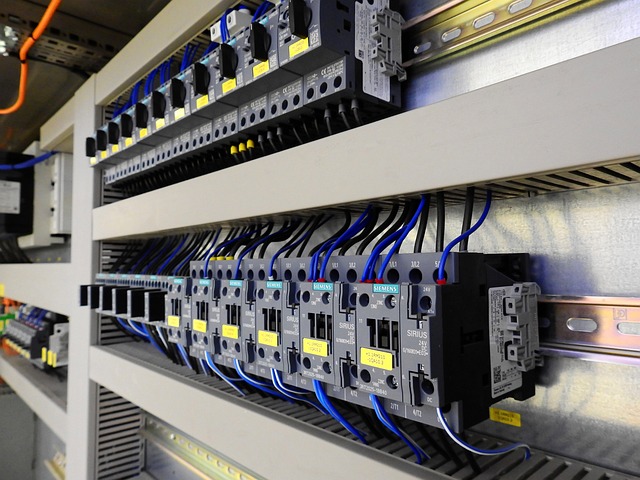Circuit breakers are crucial components of your home’s electrical system. They protect your wiring and appliances from overloads and short circuits by automatically cutting off the electrical flow when an issue arises. Understanding how to reset and maintain these devices is vital for ensuring the safety and efficiency of your electrical system. This guide will walk you through everything you need to know about circuit breakers, including how to reset them safely and maintain them properly.
What is a Circuit Breaker?
A circuit breaker is an electrical switch designed to protect an electrical circuit from damage caused by excess current from an overload or a short circuit. Unlike fuses, which must be replaced once blown, circuit breakers can be reset after tripping.
Types of Circuit Breakers
- Standard Circuit Breakers: These are the most common type and protect against overloads and short circuits.
- GFCI Circuit Breakers: Ground Fault Circuit Interrupters protect against ground faults, typically in areas with moisture, like bathrooms and kitchens.
- AFCI Circuit Breakers: Arc Fault Circuit Interrupters detect arc faults that could lead to electrical fires, providing enhanced protection.
Understanding the types of circuit breakers available can help you choose the right one for your home’s specific needs.
How to Reset a Circuit Breaker
When a circuit breaker trips, it’s essential to know how to reset it safely. Here’s a step-by-step guide to help you through the process:
Step 1: Identify the Cause
Before resetting the breaker, determine why it tripped. Overloaded circuits and short circuits are common culprits. Unplug any devices connected to the tripped circuit to ensure the issue is resolved before resetting.
Step 2: Locate the Circuit Breaker Panel
Find the circuit breaker panel, typically located in basements, garages, or utility rooms. The panel is usually a metal box with a door.
Step 3: Open the Panel
Open the door of the circuit breaker panel and locate the tripped breaker. A tripped breaker will often be in the “off” position or appear to be in the middle between “on” and “off.”
Step 4: Reset the Breaker
- Firmly push the breaker to the “off” position.
- Then, switch it back to the “on” position. You should hear a click as it resets.
Step 5: Monitor the Circuit
After resetting the breaker, monitor the circuit for a while. If it trips again, there may be a more serious underlying issue, and it’s best to consult a qualified electrician.
Common Circuit Breaker Issues
While circuit breakers are generally reliable, they can experience problems. Here are some common issues to be aware of:
Frequent Tripping
If a circuit breaker trips frequently, it may indicate an overloaded circuit or a short circuit. Identify the devices causing the overload and redistribute them across other circuits.
Breaker Won’t Reset
If a breaker won’t reset, it may be defective or there could be a serious electrical issue. Consult a professional electrician to diagnose the problem.
Burning Smell or Discoloration
If you notice a burning smell or discoloration around the circuit breaker, it could indicate overheating or a potential fire hazard. Immediately turn off the breaker and contact an electrician.
Maintaining Your Circuit Breakers
Regular maintenance of your circuit breakers can help prolong their life and ensure they function properly. Here are some maintenance tips:
Keep the Panel Clean
Dust and debris can accumulate in the circuit breaker panel, leading to overheating. Periodically clean the panel with a dry cloth and ensure it’s free from dust.
Test Your Circuit Breakers
Regularly test your GFCI and AFCI breakers to ensure they function correctly. Press the “test” button on these breakers to see if they trip. If they don’t, they may need replacing.
Consult a Professional
If you’re unsure about any aspect of your circuit breakers or electrical system, don’t hesitate to contact a qualified electrician. They can provide thorough inspections and maintenance, ensuring your system is safe and efficient.
Know When to Upgrade
If your home is older or you’ve made significant upgrades to your electrical system, it may be time to consider upgrading your circuit breakers. A licensed electrician can assess your needs and recommend the best options.
Ensure Your Electrical Safety with Expert Help!
Understanding how to reset and maintain circuit breakers is crucial for every homeowner. By following these guidelines, you can ensure your electrical system remains safe and efficient. If you have further questions or need assistance with your electrical system, contact us today! Our team of professionals is ready to help you ensure the safety and functionality of your home’s electrical systems. Don’t wait until a problem arises; be proactive about your electrical safety!


 Your Local Reliable Electrician That You Can Trust
Your Local Reliable Electrician That You Can Trust 